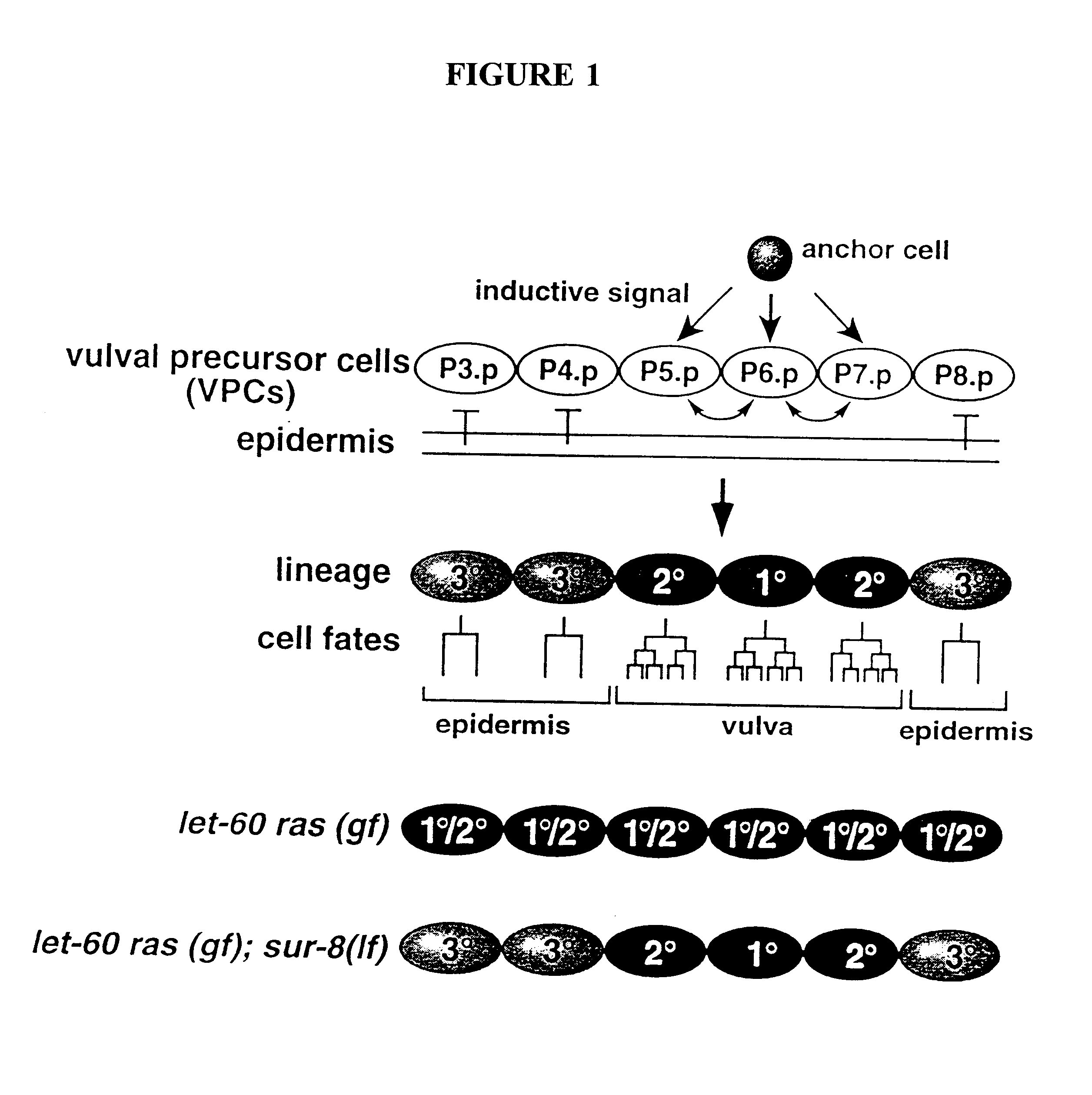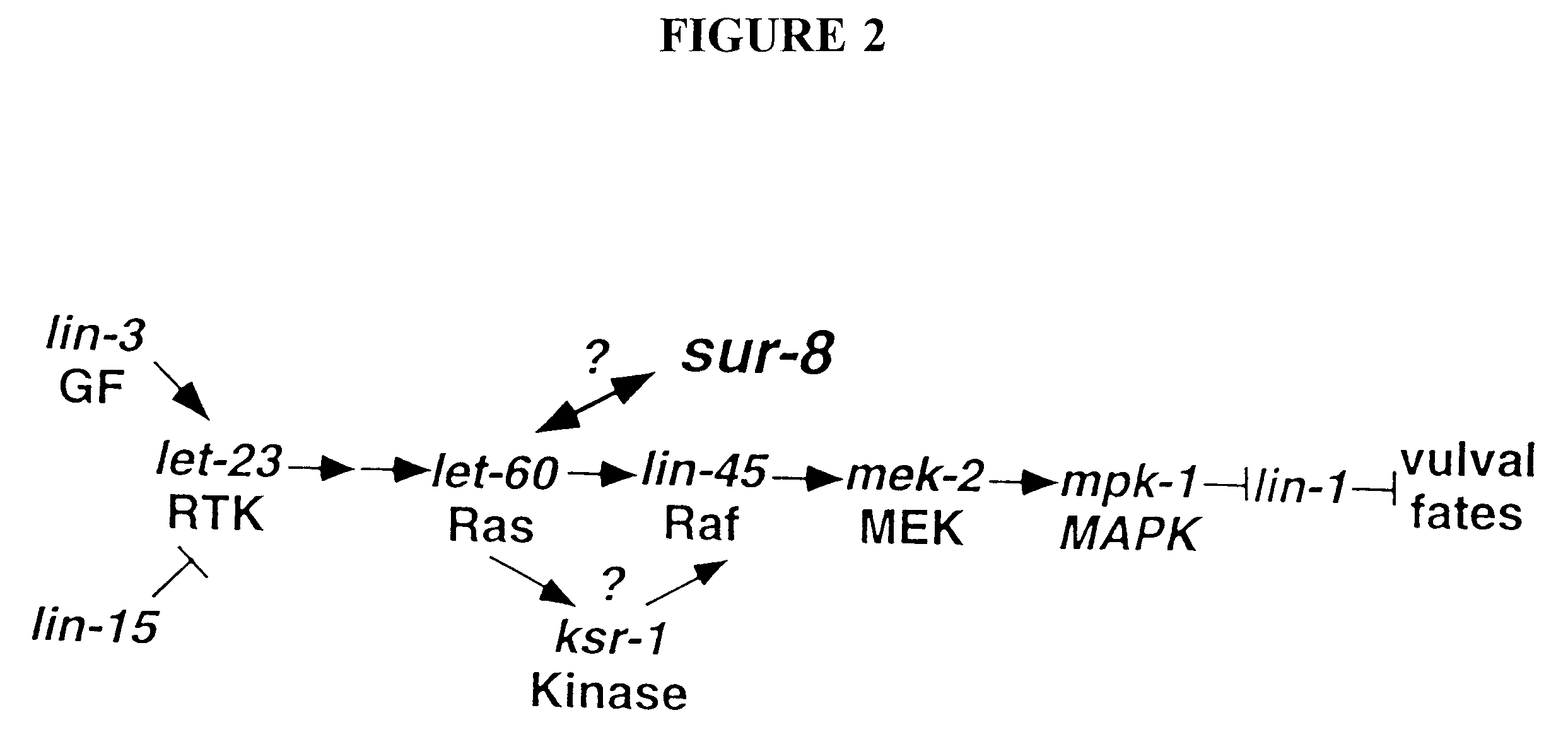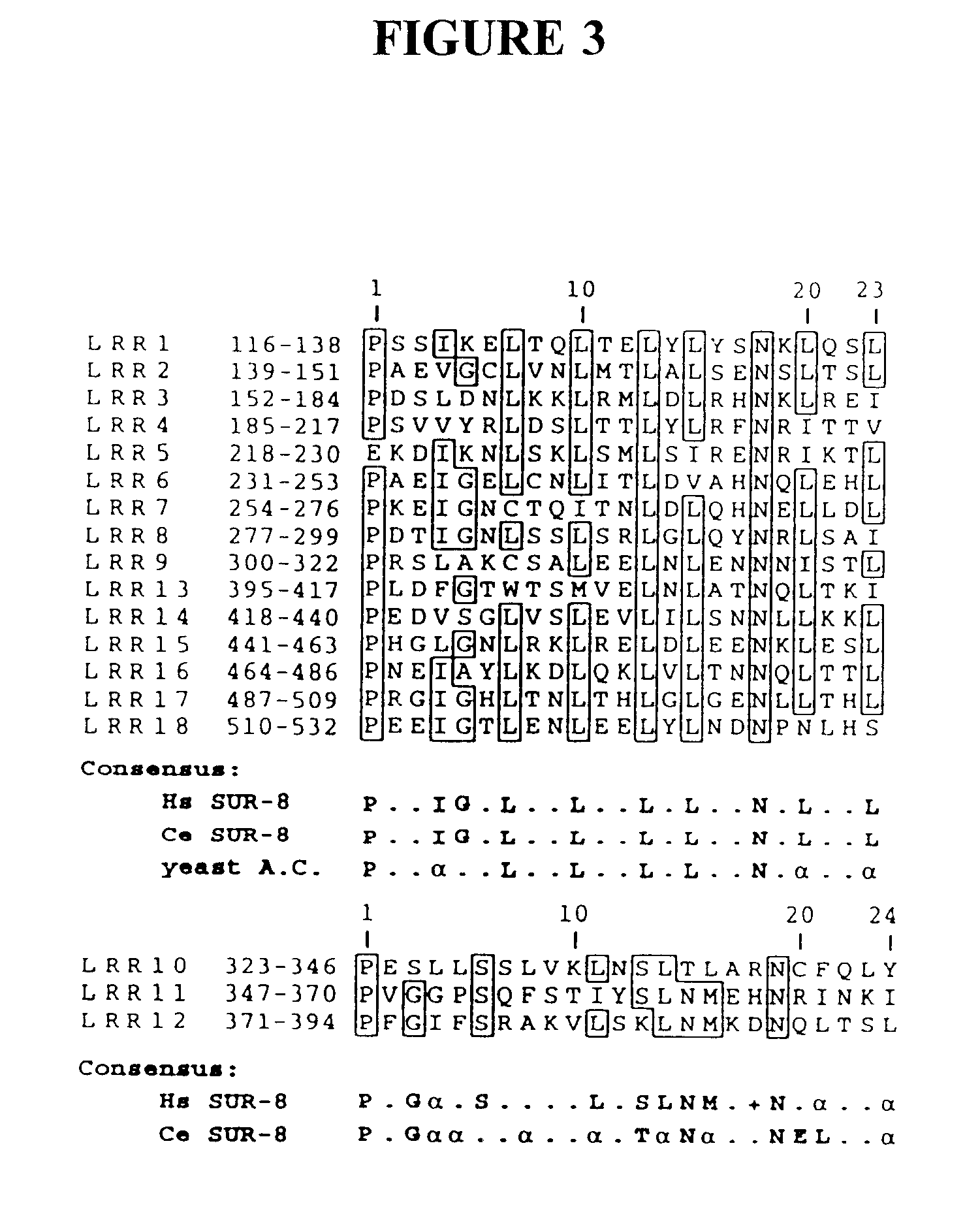Ras suppressor SUR-8 and related compositions and methods
a suppressor and sur-8 technology, applied in the field of ras suppressor sur-8 and related compositions and methods, can solve the problems of not being sufficiently characterized, unable to account for all of the cellular responses, and not developing or identifying effectors that regulate ras signal transduction or associated cellular and physiological events, etc., to achieve rapid and easy identification of monoclonal fab fragments
- Summary
- Abstract
- Description
- Claims
- Application Information
AI Technical Summary
Problems solved by technology
Method used
Image
Examples
example 1
Development of let-60 Gain-of-Function Transgenic Stains
In this Example, a let-60 ras (gf) transgenic strain for screening ras suppressors was developed. To construct the strain with completely penetrant Multivulva phenotype, wild type C. elegans (N2 strain) obtained from the C. elegans Genetic Center (CGC, University of Minnesota, St. Paul, Minn.) were transformed with cloned let-60 ras(n1046) mutant genomic DNA fragment described by Han and Sternberg (Han and Stemberg, Genes Develop., 5:2188-2198 [1991]).
Transformation was performed by microinjecting DNA to the gonad of C. elegans adult (Mello et al., EMBO J., 10:3959-3970 [1991]). Briefly, the DNA sample to be tested, along with a DNA marker was directly injected into the distal arm of the gonad of C. elegans hermaphrodites. The injected animals were allowed to grow for 3-4 days. Their F1 progeny were screened for transformants that showed the marker phenotype.
The host strain was of the genotype dpy-20. The dpy-20 mutation causes...
example 2
Screen for Ras Suppressors
In this Example, a screen for suppressors of the Multivulva phenotype were conducted. First, kuIs14 let-60(kuIs14) homozygotes that are nearly 100% Multivulva were used as a parental strain to screen for suppressors of the Multivulva phenotype. Several plates of mixed staged kuIs14 animals were collected in a 15 ml tube. After washing once in a salt solution (M9; See e.g., Sambrook et al., Molecular Cloning: A Laboratory Manual, Cold Spring Harbor Laboratory Press, Cold Spring Harbor, N.Y. [1989]), the worms were treated with mutagen ethylmethanesulfonate (EMS) at 50 mM (20 .mu.l concentrated EMS were added to 4 ml of worms in M9 solution). The tube was gently shaken in a hood for four hours. The worms were then washed three times with about 10 ml M9 solution to wash off EMS. The worms were then placed in a fresh culture plate. Two-to-three hours later, fourth larval stage worms were picked and individually placed in culture plates.
For each screen approxima...
example 3
In this experiment, candidate suppressors were outcrossed to remove any additional mutations from the genome. Prior to outcrossing, each candidate had the following genotype: dpy-20 / dpy-20; let-60(kuIs14) / let-60(kuIs14); suppressor / suppressor. These animals were mated with males with a genotype of let-60(n1046 gf)+ / +dyp-20(e1282); him-5(e1490) / him-5(e1490). The dpy-20 gene is extremely close to the let-60 gene and thus a good balance in the strain. The him-5 mutation leads to male production. F1 progeny having a genotype of let-60(n1046 gf)+ / +dpy-20; let-60(kuIs14) / +; suppressor / + were selected by selecting for non-Dpy hermaphrodites. Since most of the suppressors are recessive or semi-dominant, these animals were Multivulva. F2 non-Multivulva progeny were selected to obtain strains of let-60(n1046) / let-60(n1046); suppressor / suppressor. These strains continued to produce mostly non-Multivulva animals. Further outcrossings were done in similar way using the same male strai...
PUM
| Property | Measurement | Unit |
|---|---|---|
| diameter | aaaaa | aaaaa |
| transmittance | aaaaa | aaaaa |
| concentration | aaaaa | aaaaa |
Abstract
Description
Claims
Application Information
 Login to View More
Login to View More - R&D
- Intellectual Property
- Life Sciences
- Materials
- Tech Scout
- Unparalleled Data Quality
- Higher Quality Content
- 60% Fewer Hallucinations
Browse by: Latest US Patents, China's latest patents, Technical Efficacy Thesaurus, Application Domain, Technology Topic, Popular Technical Reports.
© 2025 PatSnap. All rights reserved.Legal|Privacy policy|Modern Slavery Act Transparency Statement|Sitemap|About US| Contact US: help@patsnap.com



